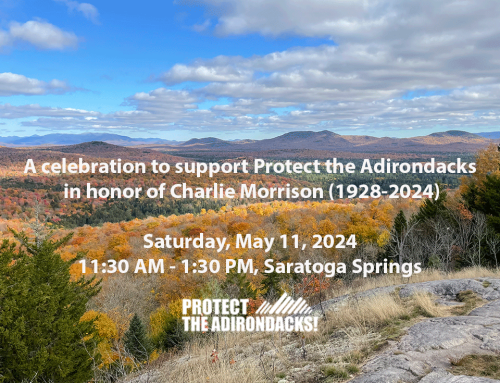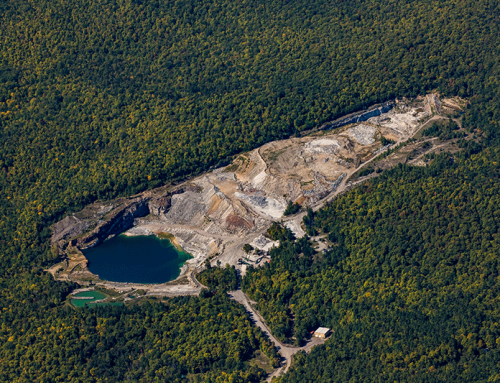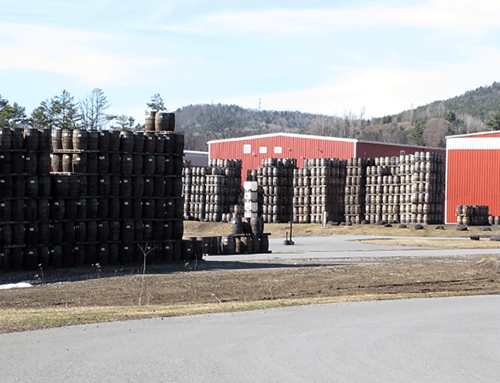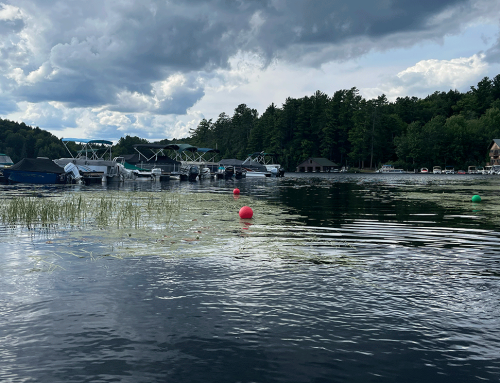On a recent field visit to the new community connector class II snowmobile trail from the Sagamore Road to 7th Lake in the Moose River Plains Wild Forest area, PROTECT found numerous instances of inadequate protections for wetlands and snowmobiles driving through open stream channels. PROTECT has posted critiques (see here and here) of this new snowmobile trail-building effort, seeing it as more road than trail, and a long-term threat to Forest Preserve management. For their parts, the DEC and APA have affirmed their great pride in this trail and they plan to build many more.
The pride of both agencies is incongruent with the facts on the ground along the trail as seen during our recent trip. The current trail condition left us feeling disappointed about the environmental damage encountered, most notably regarding wetlands and stream crossings, and the lack of measures for stormwater pollution prevention and control.
Wetlands Violations
In two locations the new community connector trail passes through a large wetland, likely class 1 wetland systems. In the first wetland, one section of a bridge had been built, but clearly more sections are needed. In another wetland no bridge had been built, but they are needed. In both sections snowmobiles have been using the trail.
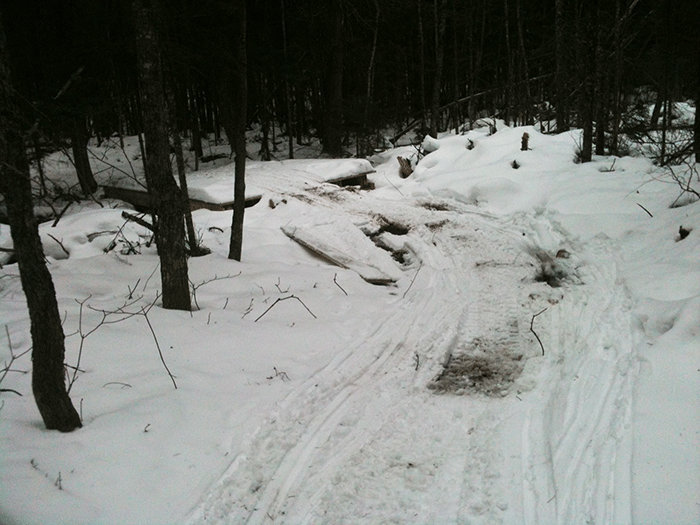
Incomplete bridge through what appears to be a class 1 wetland system. Snowmobiles are driving through the wetland, which has pooled water in places. No silt fences or mitigation was visible.
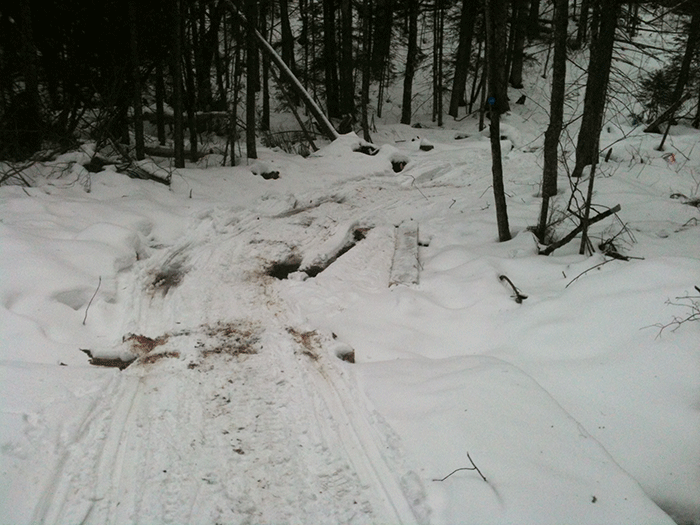
Another view of the incomplete bridge through what appears to be a class 1 wetland system. Notice debris. No silt fences or mitigation was visible.
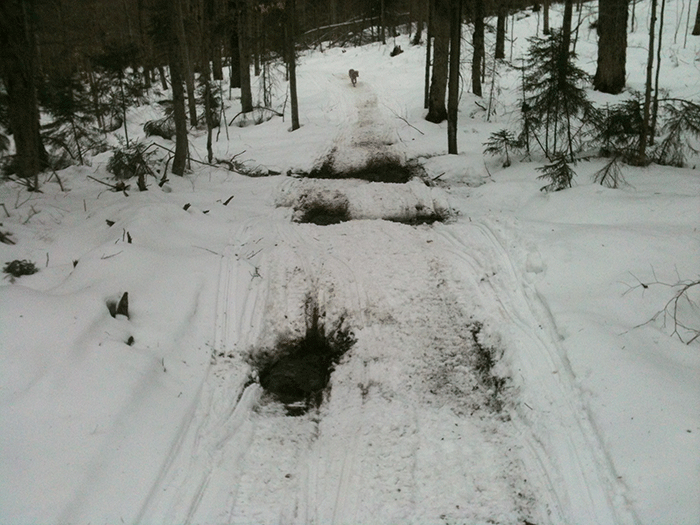
Part of trail where no bridge was built through a large wetland. Snowmobiles are driving through the wetland, which has pooled water in places.
The DEC-APA Management Guidance: Snowmobile Trail Siting, Construction and Maintenance on Forest Preserve Lands in the Adirondack Park states that “When wetland crossing or trail locations adjacent to a wetland are proposed, the trail will be designed to minimize adverse impacts.”
In neither wetland were there adequate bridges to protect the wetland, nor silt fencing or any type of mitigation efforts. In both wetlands the fact that snowmobile are driving through the wetland without bridges does not seem to “minimize adverse impacts.” It appears that this trail work violates the Wetlands Act.
Stream Crossings
In several locations no bridges had been built for stream crossings. These may have been intermittent streams, but they may have also been perennial streams too. In each location snowmobiles were driving through the stream channel. It is our understanding that snowmobiles are not supposed to drive through stream channels and that snowmobiles should have bridges built over streams to protect them.
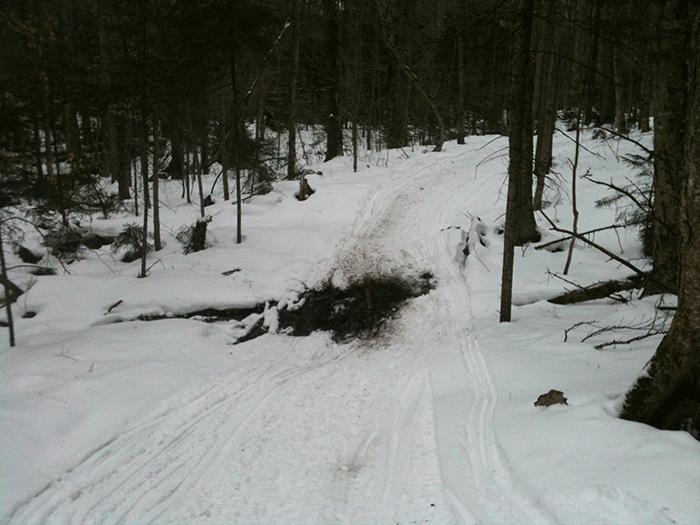
Section of trail built through a stream crossing with no bridge or protection for the stream. Snowmobiles are driving through the stream channel.
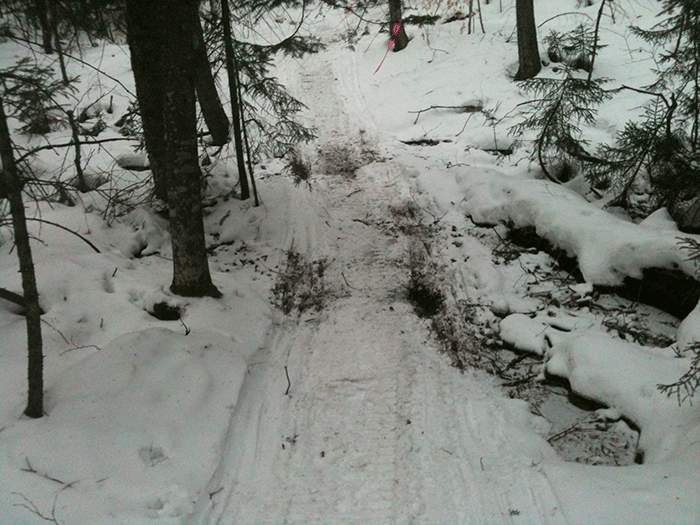
Another section of trail built through a wetland or stream crossing with no bridge or protection for the stream. Snowmobiles are driving through the stream channel.
PROTECT was also disappointed with the state’s work on the bridge over the outlet of the Raquette Lake Reservoir, less than a half mile from the Sagamore Road. It appeared that more than 1 acre total had been disturbed while the bridge and trail were under construction. There were no signs of silt fencing or any type of stormwater pollution prevention or mitigation efforts.
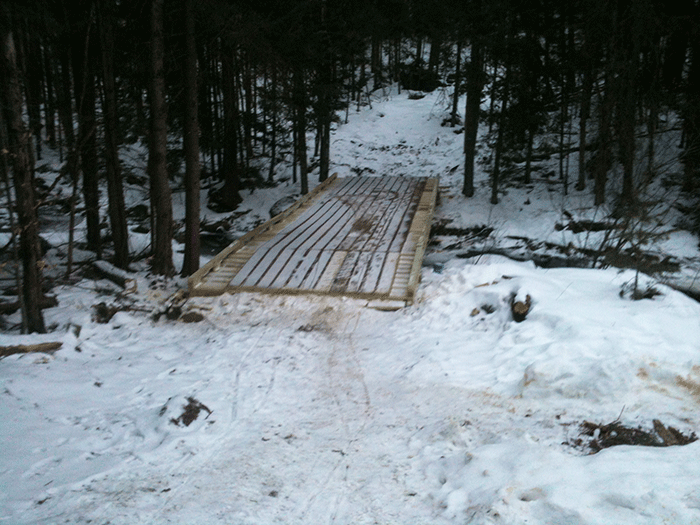
Extensive disturbed area, likely more than 1 acre, around the new bridge at the outlet of the Raquette Lake Reservoir. Lots of debris. No silt fences or mitigation was visible.
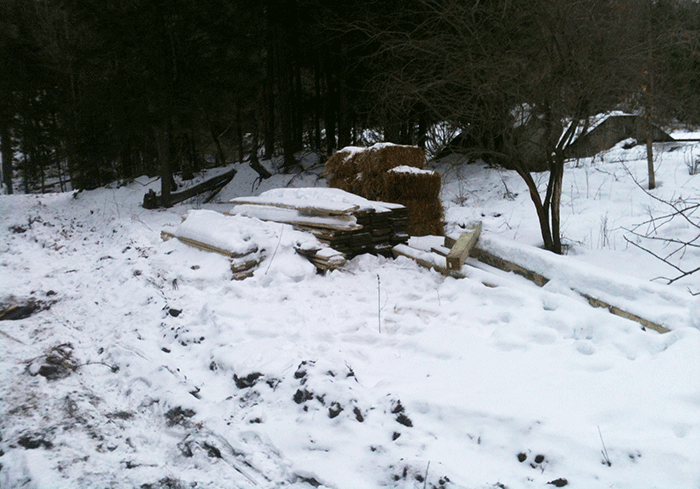
Another view of the extensive disturbed area, likely more than 1 acre, around the new bridge at the outlet of the Raquette Lake Reservoir. Lots of debris. No silt fences or mitigation was visible.
It appears to us that this work necessitated a Stormwater Pollution Prevention Plan (SWPPs) in certain areas, or perhaps its entire length of the trail, but the lack of standard measures deployed in a SWPP project att wetlands and stream crossings raises concerns that no SWPP was obtained, or if it was, the field implementation was inadequate.
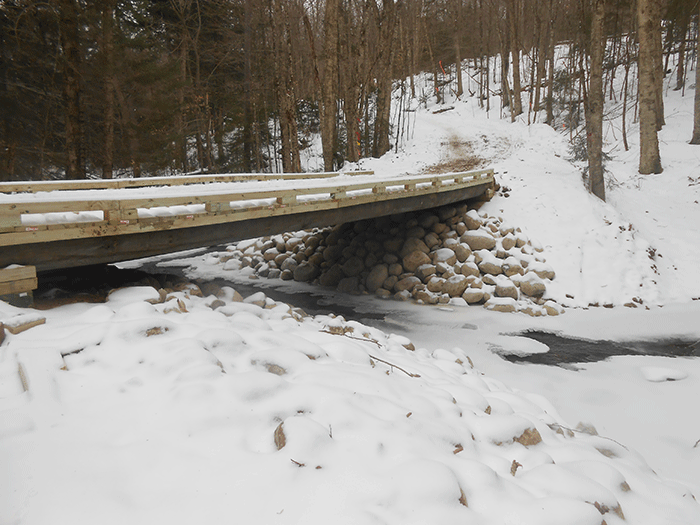
Riprap used for major bridge span. Action looks much more road-like than trail-like. Major bridge needed not for snowmobiles to cross safely, but for large several-ton tracked groomers.
The massive bridge and extensive use of riprap in the stream channel to stabilize the bridge illustrates the road-like character of this snowmobile trail.
Debris Strewn on Trail
At several locations we encountered various debris, from half buried buckets, to piles of wood, to hay bales, strewn along the trail.
PROTECT disagrees with the direction of the APA and DEC on community connector class II trail construction and grooming. We believe that this trail was designed and constructed to facilitate an illegal activity – grooming with a large several-ton tracked groomer on a designated “trail”, which is prohibited by the State Land Master Plan. The only motor vehicles allowed on a trail are snowmobiles. Groomer are something different. To facilitate the large multi-ton tracked groomer this “trail” was built to road standards with the resulting negative impacts. This “trail” should have been designed as a class I snowmobile trail and then groomed with a snowmobile pulling a drag.
See PROTECT letter asking the APA and DEC to investigate possible violations.


